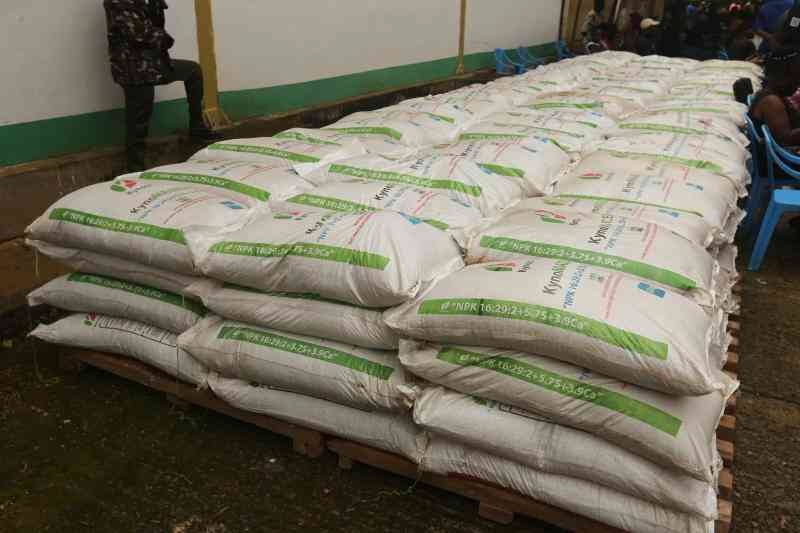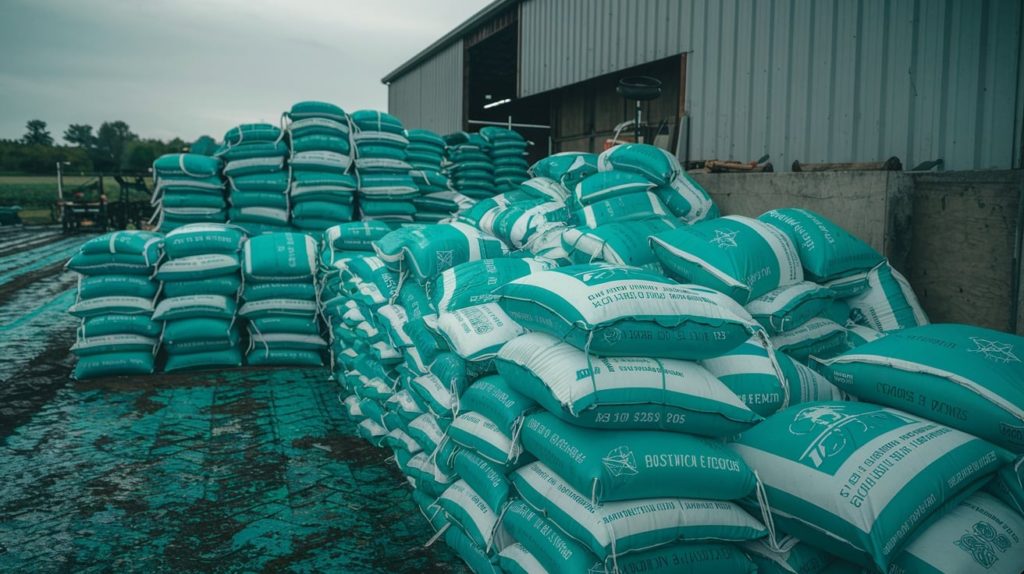In the agricultural sector, the packaging of fertilizers is a critical aspect that directly impacts the quality and effectiveness of the product. Fertilizer packaging bags serve as more than just a container; they play a key role in maintaining the integrity of the product by preventing contamination. Contaminated fertilizers can harm crops, reduce yields, and potentially cause environmental damage. This blog post explores how fertilizer packaging bags contribute to contamination prevention and highlights the best practices for ensuring that fertilizers remain pure and effective.
The Importance of Packaging in Fertilizer Integrity
Fertilizers are sensitive products that must be protected from various environmental factors to preserve their quality. Whether solid or liquid, fertilizers contain essential nutrients required for plant growth, such as nitrogen, phosphorus, and potassium. However, these nutrients can become ineffective or harmful when exposed to moisture, air, or contaminants.
Fertilizer packaging bags act as the first line of defense, providing a barrier that shields the product from external elements. The materials used in packaging, the design of the bags, and the storage practices all contribute to preventing contamination. Without proper packaging, fertilizers are vulnerable to degradation, clumping, or contamination from other substances.
Types of Contaminants That Affect Fertilizers
To better understand the role of packaging in preventing contamination, it is important to consider the various types of contaminants that fertilizers are exposed to. These contaminants can be broadly categorized into:
1. Moisture
Moisture is one of the primary factors that can compromise the quality of fertilizers. When fertilizers are exposed to humidity or direct contact with water, they can clump together, dissolve, or undergo chemical changes that render them ineffective. This is particularly true for powdered or granulated fertilizers that can absorb moisture from the air.
2. Foreign Particles
During handling, storage, or transportation, fertilizers may come into contact with dirt, dust, or other foreign particles. These impurities can alter the chemical composition of the fertilizer or introduce harmful substances that affect plant health.
3. Airborne Contaminants
Airborne contaminants such as bacteria, fungi, or mold spores can be introduced into fertilizers during packaging, especially if the packaging bags are not adequately sealed or protected. These contaminants can thrive in organic fertilizers and reduce their efficacy or even pose a health risk to crops.
4. Chemical Contaminants
In some cases, fertilizers may come into contact with chemicals that may inadvertently leak from other nearby products or materials during storage or transportation. These chemical contaminants can react with the fertilizer and lead to unintended results, such as toxicity to plants or the environment.
How Fertilizer Packaging Bags Prevent Contamination
Now that we understand the types of contaminants that can affect fertilizers, let’s explore how proper packaging can prevent these issues and ensure product integrity.
1. Moisture Protection
Fertilizer packaging bags are designed to protect the product from moisture, which is one of the most significant threats to fertilizer quality. High-quality packaging materials such as multi-layered plastics or foil laminates act as a moisture barrier, preventing water from seeping into the bag. These materials also reduce the risk of condensation inside the packaging, which could lead to the fertilizer clumping together or dissolving.
Packaging materials with moisture-resistant properties are particularly important for granular or powdered fertilizers, as they are highly susceptible to absorbing moisture from the surrounding environment. Additionally, some packaging solutions come with moisture-proof seals or desiccants, further enhancing the moisture protection and ensuring that fertilizers remain dry and effective.
2. Air Barrier
In addition to moisture protection, a key aspect of fertilizer packaging bags is their ability to act as an air barrier. Air exposure can lead to the oxidation of certain nutrients, reducing their effectiveness over time. Packaging materials that are designed to be airtight, such as vacuum-sealed bags or those with hermetic seals, prevent the entry of air and protect fertilizers from deterioration.
Airtight packaging is particularly crucial for organic fertilizers that are more prone to microbial contamination. By preventing air from entering the packaging, the risk of mold growth and bacterial contamination is significantly reduced. For fertilizers that are sensitive to heat, airtight packaging also prevents temperature fluctuations, which could lead to chemical degradation.
3. Protection from Foreign Particles
Fertilizer packaging bags are designed to keep foreign particles such as dust, dirt, and debris out of the product. The bags are constructed using materials that prevent particles from penetrating the packaging, ensuring that fertilizers remain pure.
High-quality packaging bags are also designed with proper sealing mechanisms, such as heat seals or adhesive strips, to ensure that they remain closed during transportation and storage. This prevents contaminants from entering the bag and maintains the integrity of the fertilizer. Additionally, clean and hygienic packaging processes minimize the risk of contamination during the filling and sealing stages.
4. Barrier to Chemical Contaminants
In some cases, fertilizers are susceptible to contamination from nearby chemicals, such as pesticides or herbicides. To address this, packaging materials are chosen to resist chemical permeation. Certain materials, such as polyethylene or polypropylene, are known for their ability to resist chemical interactions, making them ideal for packaging fertilizers.
Moreover, the use of double-layered or multi-layered packaging can provide an additional barrier between the fertilizer and any potential chemical contaminants in the surrounding environment. By preventing the transfer of chemicals, the packaging ensures that the fertilizer remains safe for use and does not cause harm to the plants or the environment.
Best Practices for Fertilizer Packaging and Storage
While packaging is a critical factor in preventing contamination, it is equally important to follow best practices for storage and handling to maintain the quality of the fertilizer. Here are some best practices to ensure that fertilizers remain uncontaminated throughout their life cycle:
1. Choose the Right Packaging Materials
The selection of appropriate packaging materials is essential for preventing contamination. When choosing fertilizer packaging bags, it is important to consider the specific needs of the product. For example, fertilizers that are sensitive to moisture may require packaging with moisture-resistant layers, while organic fertilizers may benefit from airtight seals to prevent microbial contamination.
2. Ensure Proper Sealing
One of the most important aspects of fertilizer packaging is ensuring that the bags are properly sealed. This prevents any contaminants from entering the packaging and keeps the fertilizer in optimal condition. Seals should be checked for integrity during the manufacturing process, and packaging bags should be inspected for any defects or damage that could compromise their effectiveness.
3. Store Fertilizers in a Cool, Dry Place
Even the best packaging cannot protect fertilizers if they are stored in unsuitable conditions. It is important to store fertilizers in a cool, dry place, away from direct sunlight, moisture, and extreme temperatures. Proper storage helps maintain the effectiveness of the packaging and ensures that the fertilizer remains free from contaminants.

4. Regular Inspections
Routine inspections of fertilizer packaging can help identify any potential issues before they lead to contamination. By checking for signs of wear, tears, or degradation, you can ensure that the packaging continues to protect the product effectively.
Conclusion
Fertilizer packaging bags play a critical role in preventing contamination and ensuring the effectiveness of fertilizers. By providing protection from moisture, foreign particles, air, and chemical contaminants, high-quality packaging helps preserve the integrity of fertilizers and ensures that they remain safe and effective for agricultural use. By following best practices for packaging, sealing, and storage, fertilizer manufacturers and users can safeguard the quality of their products and contribute to the overall success of crop production.
Proper packaging not only helps prevent contamination but also ensures that fertilizers are delivered to farmers in the best possible condition, enhancing their performance and supporting healthier crops.
